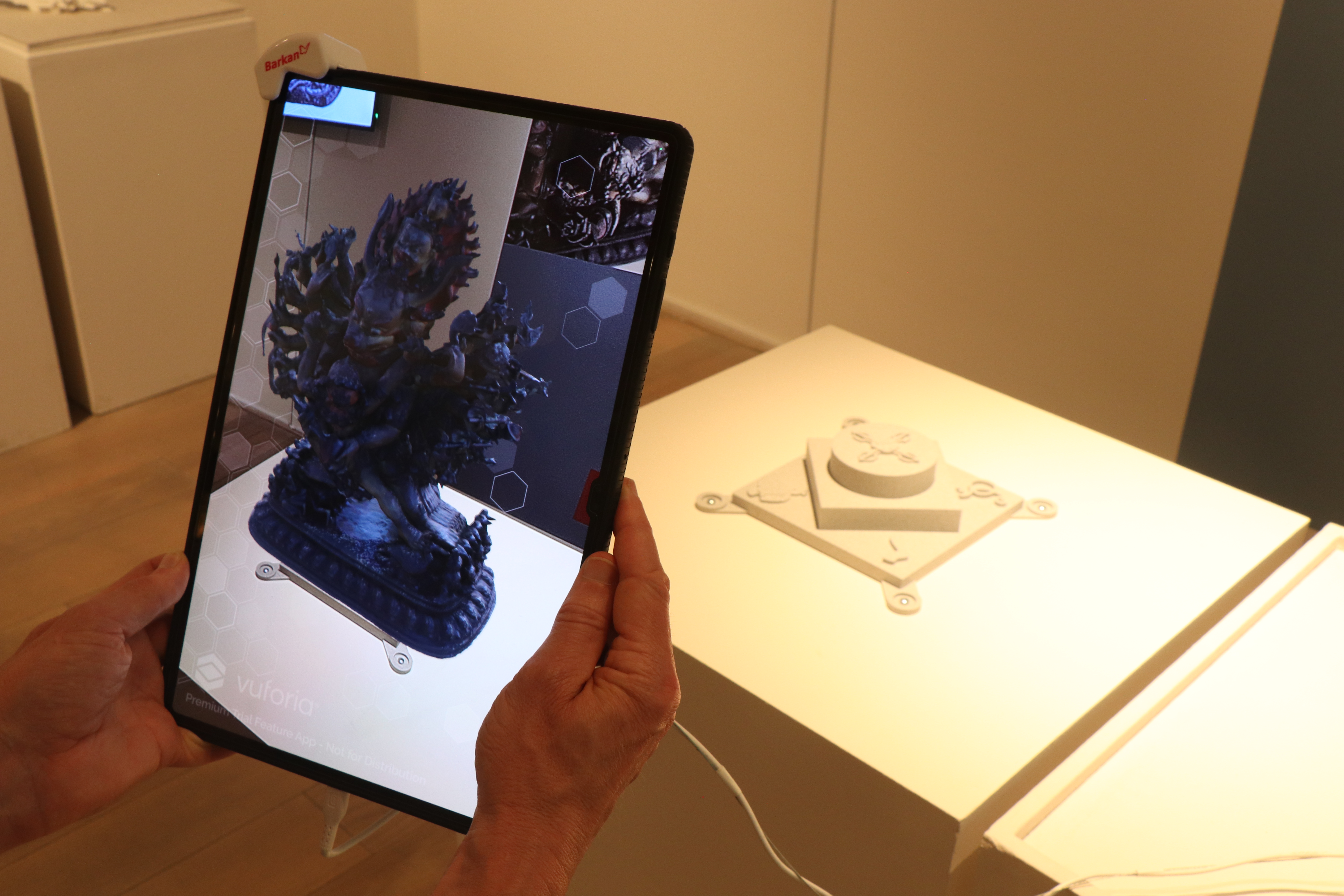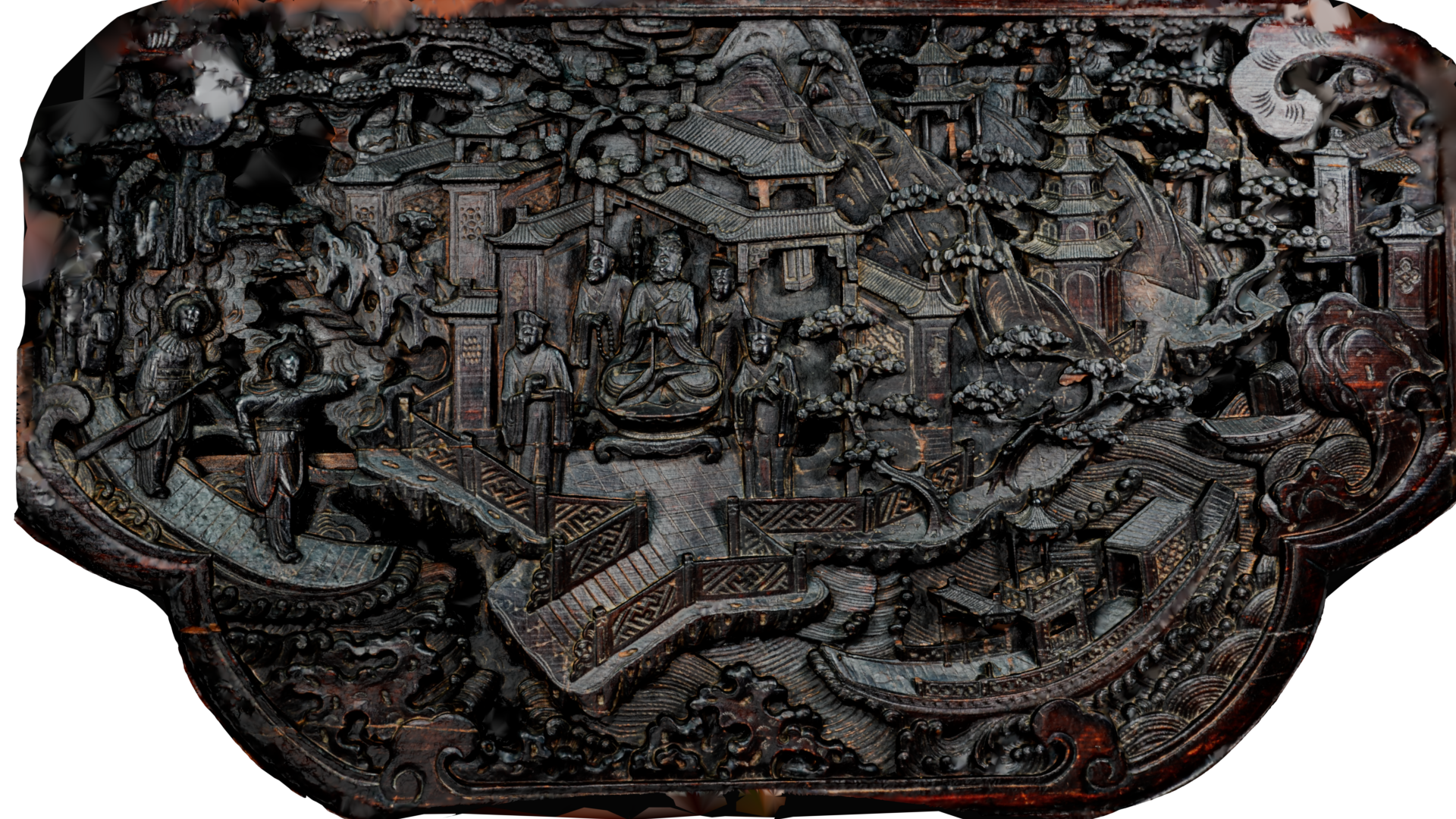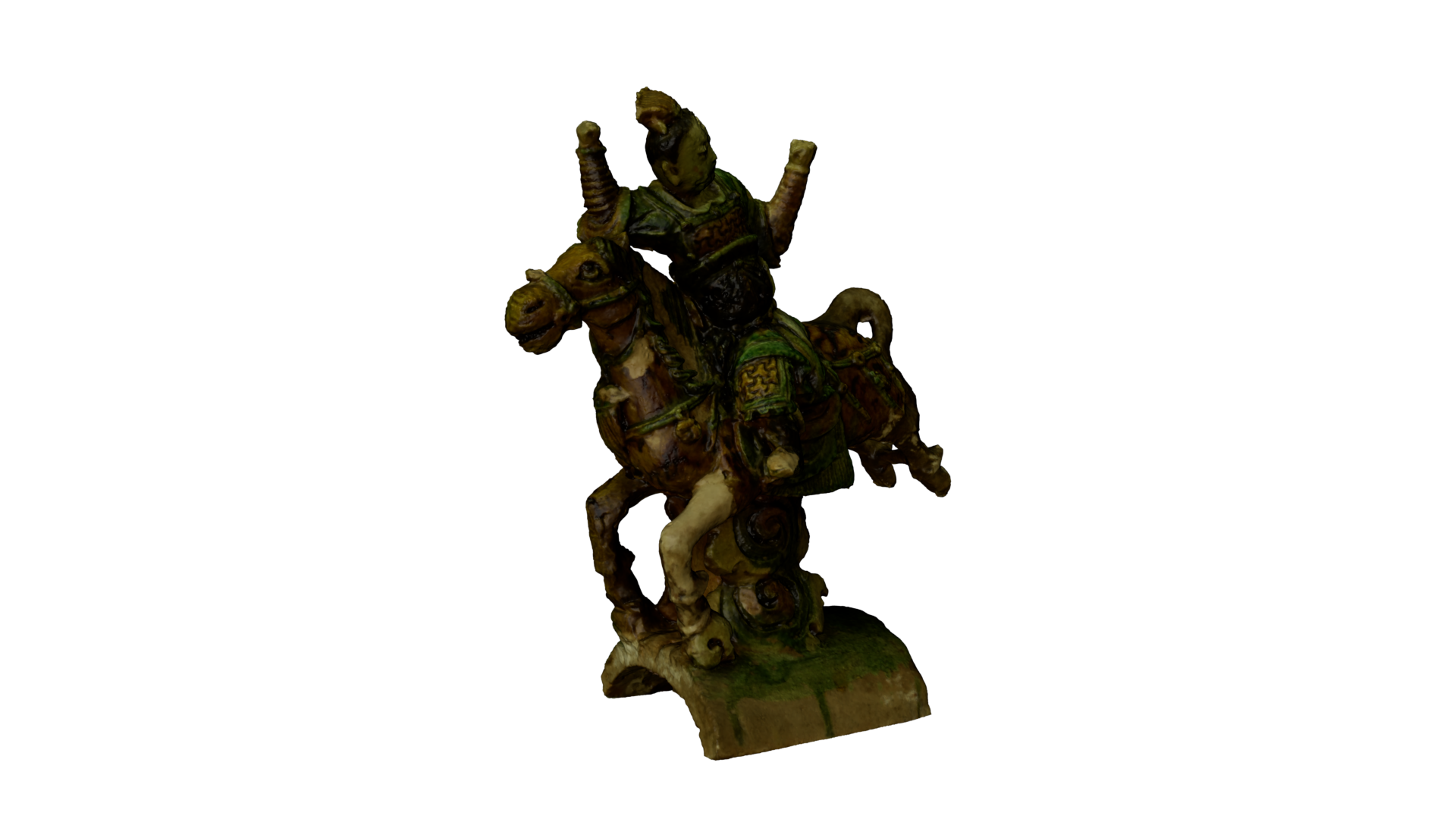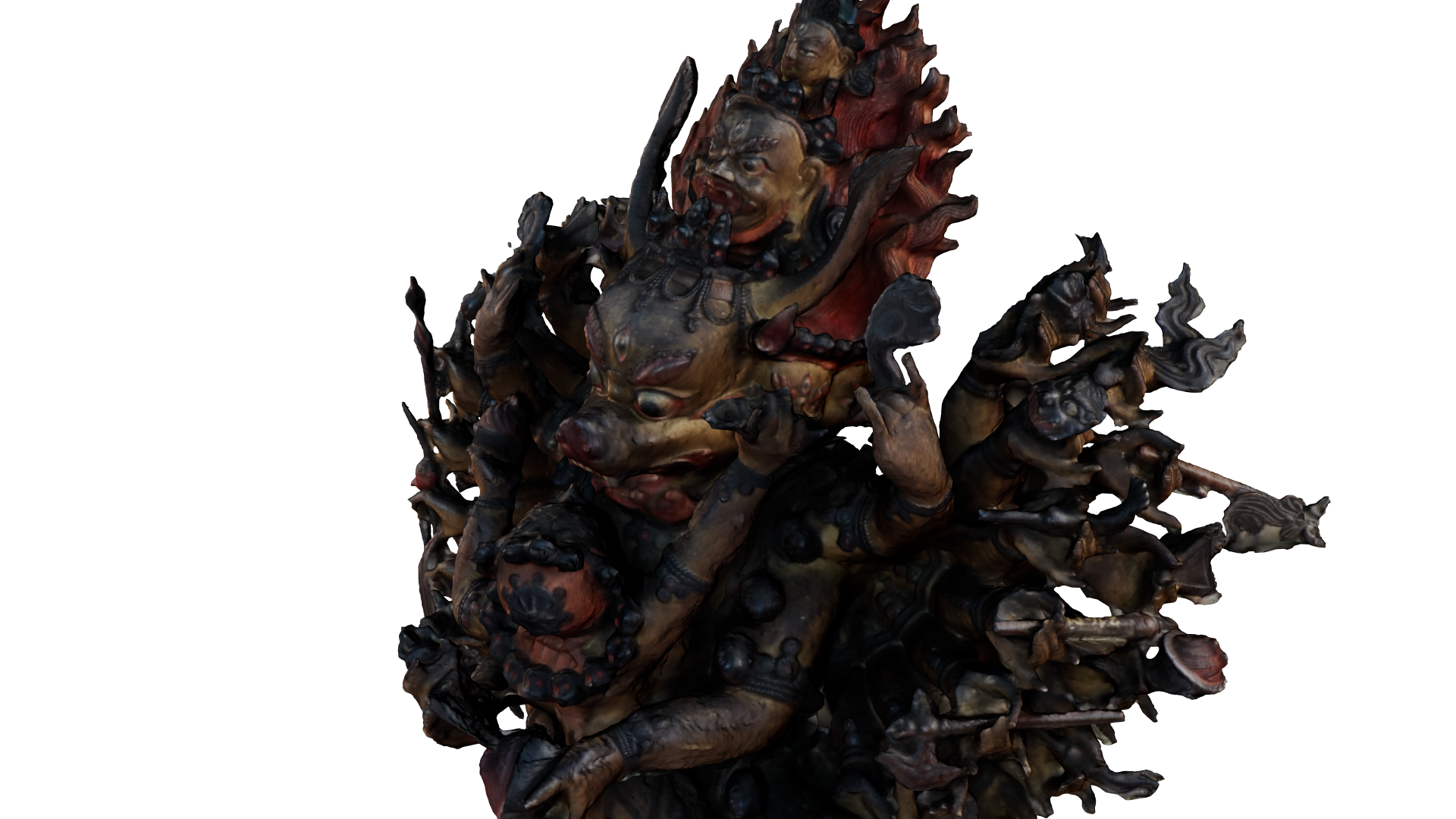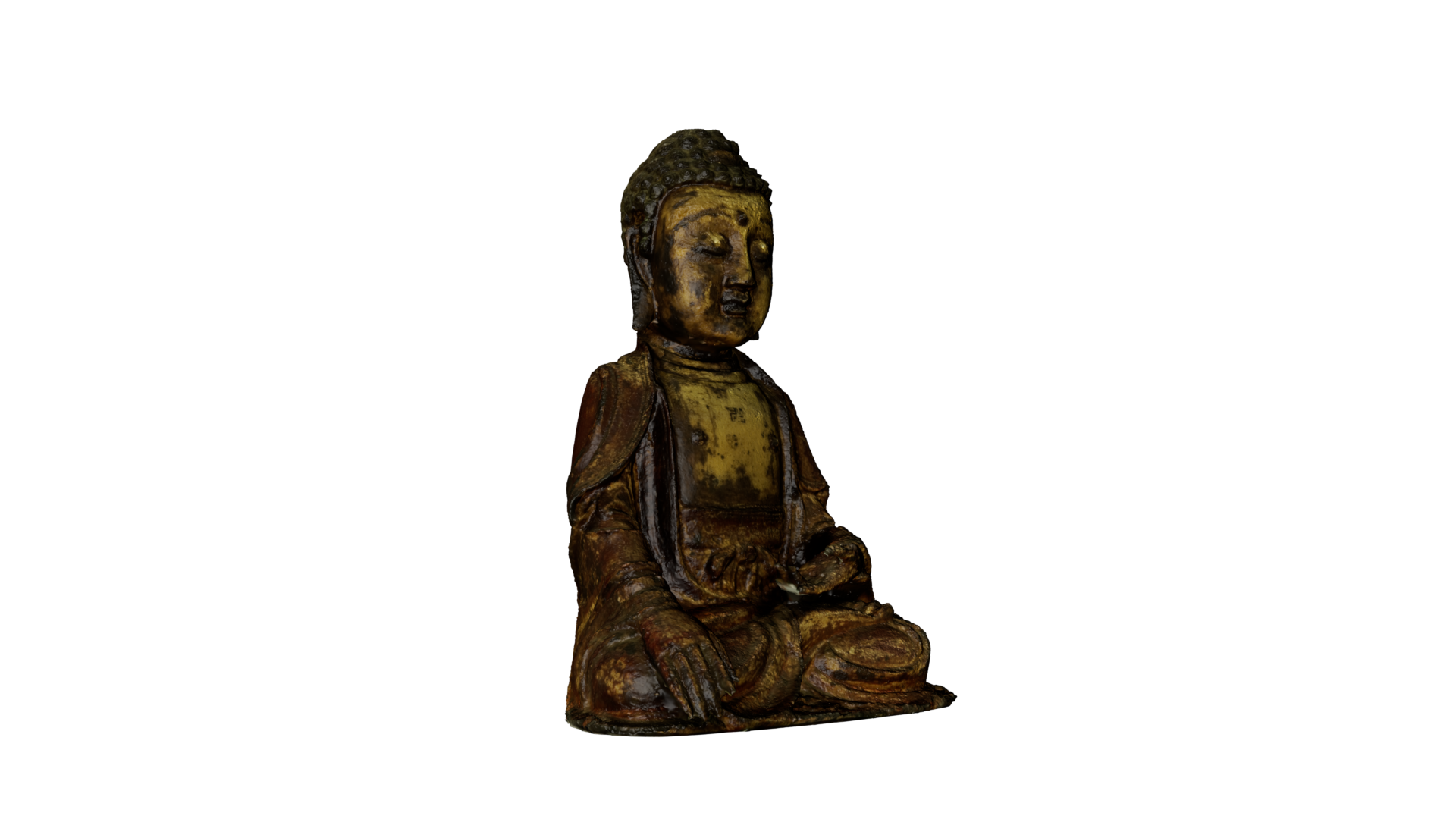SEM exhibition - Technical aspects
Generally speaking, the whole digital part of the exhibition follows a similar concept:
Allowing the user to step closer and interact with the presented pieces on a more personal level, as was the case in the past, when the collection had been a lived-in museum. Other than in the past, however, this is now achieved using technology and the virtual as a medium.
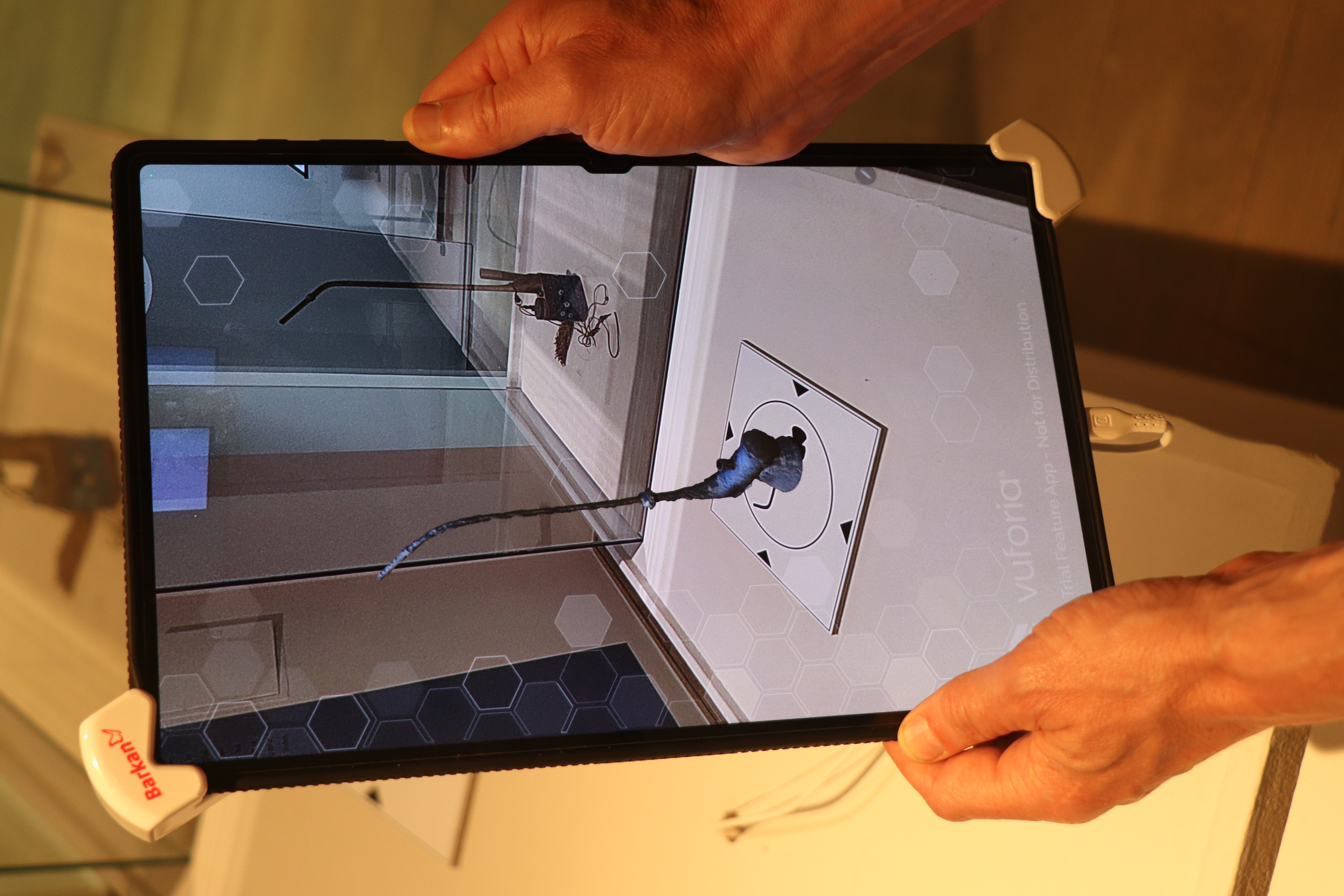
The exhibition of a digitally reconstructed tobacco pipe, which is currently owned and on display by the Plečnik House, was one such example. This orphaned object probably also used to be part of Skušek’s collection, as it still houses a number of similar pipes. Using a tablet and a specially developed augmented reality (AR) app, the visitors can now place the pipe next to a similar piece, that still remains at the Slovene Ethnographic Museum (SEM). The tablet thereby tracks a symbol on the pedestal next to the real pipe and places the model of its digital counterpart accordingly, which allows the user to freely move the tablet around and view the pipes from different angles and distances, comparing both in great detail.
A second example of AR interaction, which also made use of the tablet, was a digital reconstruction of one of the Buddhist sculptures originally placed on a dresser in the Skušek’s apartment. The Vajrabhairava sculpture, entwined with his partner, was first 3D scanned using a big dataset of images and the exhibited and visualised using a projection base, which was tracked by the tablet using a camera and the developed AR app. On the base, the Buddhist sculpture is enlarged compared to its real counterpart, allowing users to step closer and examine its manifold intricate details at their own convenience. Furthermore, the created base also technically allows for additional interaction, as changes to the base, such as stacking new parts on it, could be tracked and used to increase or decrease the digital model’s size or create overlays to display additional information. This creates a whole new layer of interaction and knowledge transfer, that was not present in the original piece.
A third approach was offering the visitors a closer look at the oftentimes detailed pieces using 3D models rendered in virtual space. These pieces were also 3D scanned with great care, to ensure a faithful replication of the original. The created digital twins are then explored using camera fly arounds and turntables. Due to the digital camera and model not being limited by its original’s size, weight and fragility, they are offering a perspective that the static exhibition cannot.
All in all, the interactive part of the exhibition heavily leans on mixed media and digital reconstruction. By scanning each piece, thus digitising the original objects, it becomes possible to interact with them in a completely different way, without having to worry about damaging or potentially breaking them. Furthermore, these digital twins also cannot be stolen or otherwise misplaced, and the ease of which it is replicated also allows for continued exhibition in smaller or virtual spaces as well as sharing with different fields.

